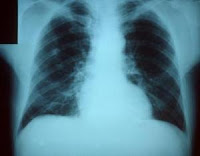In 1895, during experiments with electric currents passed through a vacuum tube, Wilhelm Conrad Röntgen noted that a nearby fluorescent screen glowed when the current was being passed. When the current was switched off the screen stopped glowing. He attributed this effect to previously unknown rays which, X being the symbol for an unknown quantity, he called X-rays. This were X-rays first discovered.
X rays are electromagnetic radiation that differentially penetrates structures within the body and creates images of these structures on photographic film or a fluorescent screen. These images are called diagnostic x rays. Diagnostic x rays are useful in detecting abnormalities within the body. They are a painless, non-invasive way to help diagnose problems such as broken bones, tumors, dental decay, and the presence of foreign bodies.
X-Ray radiation is potentially very hazardous. Too much radiation at one body site can cause skin conditions resembling severe burns or local cancers. Widely distributed over the body so that it penetrates much of the blood-forming marrow, excessive radiation can cause leukemia. If it strikes the gonads (ovaries or testicles), excessive radiation—i.e., by best estimate, beyond 10 roentgens*—can cause mutations in the genes, which, in turn, may mean deformities in the patient's descendants.
It is one of the ironies of radiological practice. That X-rays can both cause cancer and be used to treat it. Nowadays, with the use of very small doses of radiation to produce high quality X-ray images, the risk of cancer after properly supervised X-ray examinations is extremely small; so small as to be of no consequence to any individual.
Health effects of exposure to X-ray radiation come in two general types, direct or indirect. X Rays are thought to create radicals in exposed cells of your body that may break or modify chemical bonds within critical biological molecules. As a result:
1. Cells may be injured or damaged, although many cells repair themselves, resulting in no residual damage,
2. Cells may die, which millions of body cells do every day and are replaced in a normal biological process,
3. Cells may incorrectly repair themselves resulting in a biophysical change. Finally, X rays may pass through the body with no interaction.
Factors that determine biological effects:
•Dose rate
•Total dose received
•Energy of the radiation
•Area of the body exposed
•Individual sensitivity
•Cell sensitivity
•Most sensitive: Blood-forming organs, reproductive organs, digestive organs
•Least sensitive: Nervous system, muscle and connective tissues
If X-ray not that really danger at all, You must be wonder, why the staff in the X-ray departement always go behind the screen? Because staff in the X-ray department work with X-rays all the time they would, if they stayed beside every patient, over the course of time, be exposed to quite a high dose of radiation. The cumulative effect would be significant for them in a way that it is not significant for an individual patient. That's the why.
http://www.time.com/time/magazine/article/0,9171,862407,00.html
loading...

